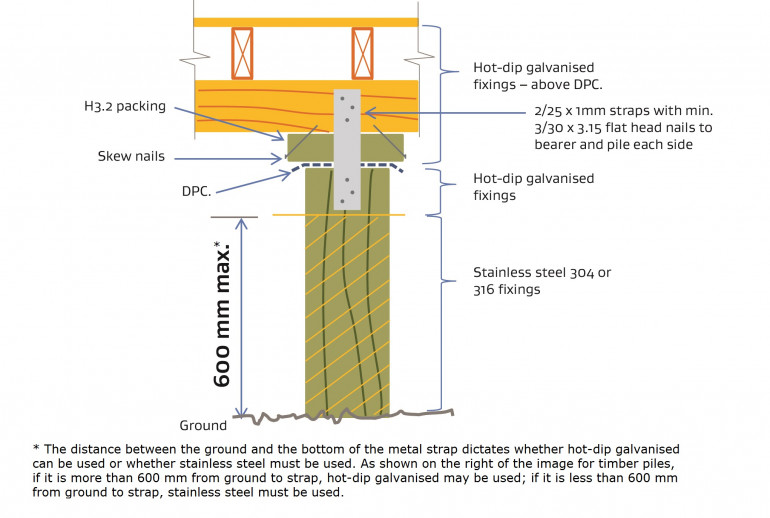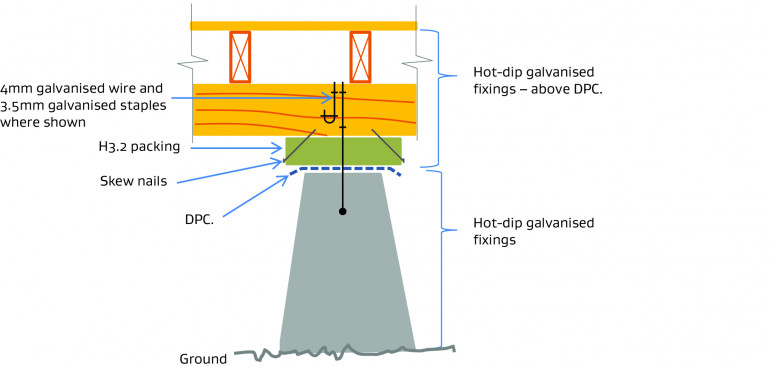Doing it right with jack and pack
Codewords 74: September 2016
In mid-2015, MBIE carried out a survey of earthquake-damaged and repaired homes in Canterbury (CEDAR survey). While the topic of the report was earthquake repairs, the information is useful for anyone undertaking foundation repair. This article looks at what we learned about the jack and pack repair method.

Assessing the situation
The first step is to assess whether to repair the damaged section of foundations or replace it. This will depend on the extent of the damage. For example if you are:
- relevelling a timber framed floor by more than 100 mm then the subfloor may need to be rebuilt rather than repaired
- assessing a pile that is more than 15 mm out of plumb, you should look at replacing it
- going to relevel a concrete slab foundation and it is more than 150 mm out of level, a rebuild is the suggested option.
You should also identify if the work needs a building consent. A significant repair to the structure (including the foundation) of a home will likely need a building consent. A minor repair to a few piles might not need one, but it pays to check with the local Building Consent Authority, or read MBIE’s guidance on Schedule 1 of the Building Act.
Building work that does not require a building consent(external link)
Doing the job
The general steps to relevelling include:
- making the area safe and ready for the work
- identifying the relevelling heights
- detaching the connections and services from the subfloor
- applying the relevelling methodology
- reattaching connections and services
- reinstating disturbed ground and tidying up.
For a jack and pack repair on a timber subfloor, if you are lifting the bearers to pack them up, a single H3.2 treated timber packer or folding wedges fixed in place are suggested.
Remember, if you need to pack a pile more than 100 mm you should replace the pile instead. You should also replace the piles that are out of alignment or are leaning too far over.
Once you have packed the piles you need to ensure that the pile, packer and bearer are aligned and fixed together well.

Jack and pack foundation repair method for timber piles.

Jack and pack foundation repair method for concrete piles.
Unsure of what to do?
If you are unsure of the methodology or whether the work should have a building consent, it is a good idea to speak to the local building consent authority. For expert advice you could consult with an engineer, or direct the home owner to get some advice.
MBIE has put out several guidance documents(external link)
Watch our packing house piles video(external link)
Below-floor work – Canterbury builder guide(external link)
Quiz
1) How far out of plumb would a pile need to be before you should replace it?
- 10 mm
- 15 mm
- 20 mm
- Never replace a pile
2) I want to pack only one pile in my repair, how much can I pack it without needing to replace it?
- 50 mm
- 75 mm
- 100 mm
- 200 mm
3) What does Schedule 1 of the Building Act tell you?
- How much you can pack your pile
- What building work is restricted building work
- What building work does not require a building consent
4) Where can I get more information about repairing and relevelling foundations?
- The local council
- The Building Performance website
- MBIE’s guidance documents
- All of the above
Check answers
1) How far out of plumb would a pile need to be before you should replace it?
b. 15 mm
2) I want to pack only one pile in my repair, how much can I pack it without needing to replace it?
c. 100 mm
3) What does Schedule 1 of the Building Act tell you?
c. What building work does not require a building consent
4) Where can I get more information about repairing and relevelling foundations?
d. All of the above
